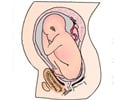Study shows that the rate of COVID-19 infection rates is higher in pregnant women than others.

‘Only some states consider pregnancy a high-risk health condition for COVID-19 vaccine allocation in Phase 1B’
Read More..




Findings also showed that pregnant patients from nearly all communities of color in Washington had two to four times higher infection rates than expected based on the race-ethnicity distribution of pregnant women in 2018. Read More..
Medical care in a language other than English was also provided to a high number of pregnant women with COVID-19, pointing towards the need to enhance vaccination rates in these communities.
The authors state that this population should be considered at high risk and be included in Phase 1B vaccination schedules.
Since COVID-19 vaccine allocation is done based on priority lists set by each state's Health Department, only some states consider pregnancy a high-risk health condition for COVID-19 vaccine allocation in Phase 1B.
"Many states are not even linking their COVID-19 vaccine allocation plans with the high-risk medical conditions listed by the CDC - which include pregnancy," Dr. Kristina Adams Waldorf, senior author, said.
Advertisement
Erica Lokken, co-author, suggests that higher infection rates may be due to the overrepresentation of women in many professions and industries considered essential during the COVID-19 pandemic - including healthcare, education, service sectors.
Advertisement
"COVID-19 case reports are missing pregnancy status in up to 65% of reports for women of reproductive age. As a result, the number of pregnant patients infected with COVID-19 was likely underrepresented in national numbers," the authors state.
Adams Waldorf explains that when the data is incomplete for specific groups, like pregnant women, it is easy to assume the pandemic hasn't impacted them.
The authors aim to use information from this study to be more prepared for the next pandemic and not to brush pregnant women to the side.
The data can also inform vaccine policy and help public health workers and physicians reduce COVID-19 in vulnerable populations.
Source-Medindia















